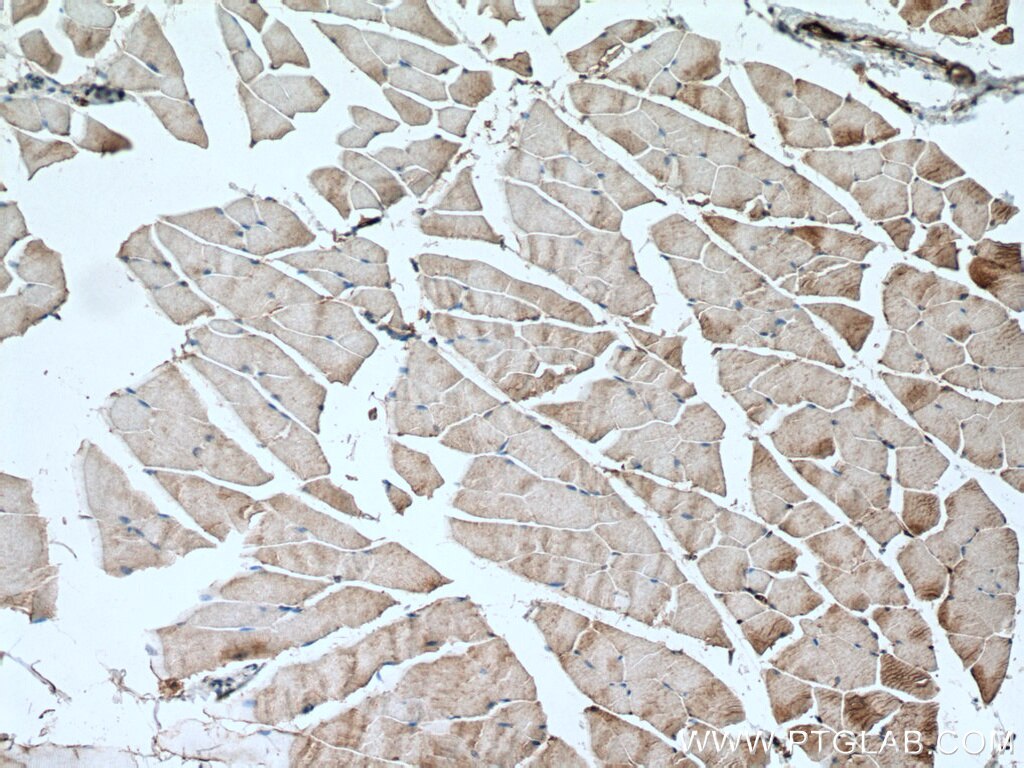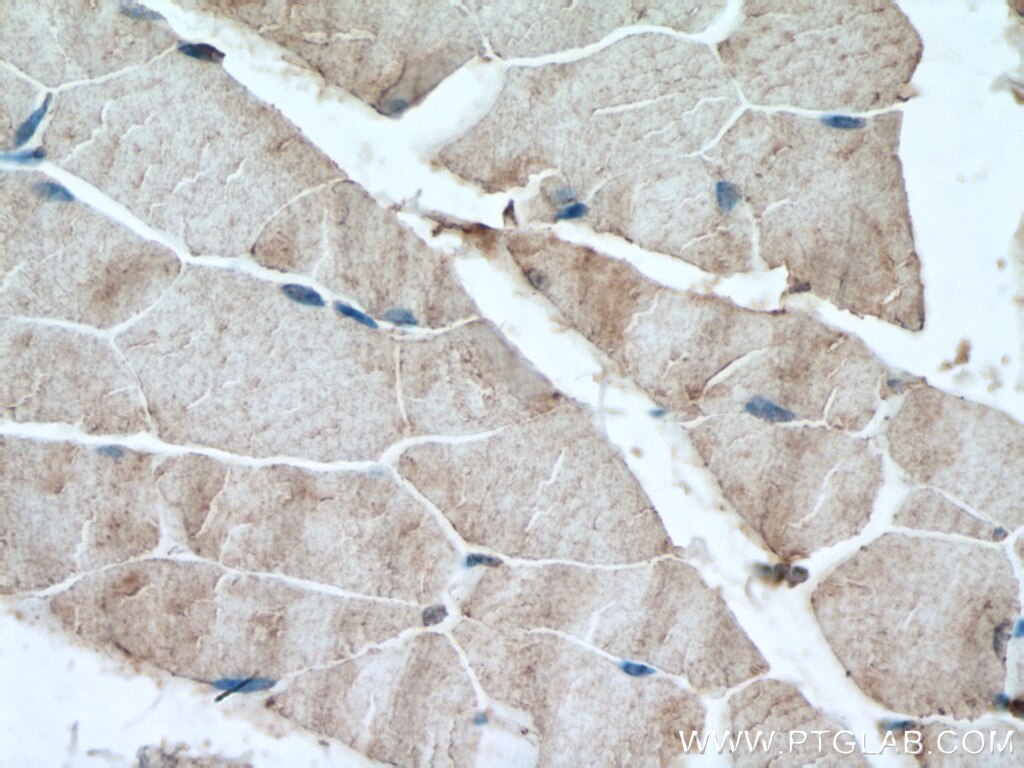Tested Applications
| Positive IHC detected in | mouse skeletal muscle tissue Note: suggested antigen retrieval with TE buffer pH 9.0; (*) Alternatively, antigen retrieval may be performed with citrate buffer pH 6.0 |
Recommended dilution
| Application | Dilution |
|---|---|
| Immunohistochemistry (IHC) | IHC : 1:50-1:500 |
| It is recommended that this reagent should be titrated in each testing system to obtain optimal results. | |
| Sample-dependent, Check data in validation data gallery. | |
Product Information
28315-1-AP targets SCN4A in IHC, ELISA applications and shows reactivity with human, mouse samples.
| Tested Reactivity | human, mouse |
| Host / Isotype | Rabbit / IgG |
| Class | Polyclonal |
| Type | Antibody |
| Immunogen | SCN4A fusion protein Ag27536 Predict reactive species |
| Full Name | sodium channel, voltage-gated, type IV, alpha subunit |
| Calculated Molecular Weight | 208 kDa |
| GenBank Accession Number | NM_000334 |
| Gene Symbol | SCN4A |
| Gene ID (NCBI) | 6329 |
| RRID | AB_2881109 |
| Conjugate | Unconjugated |
| Form | Liquid |
| Purification Method | Antigen affinity purification |
| UNIPROT ID | P35499 |
| Storage Buffer | PBS with 0.02% sodium azide and 50% glycerol , pH 7.3 |
| Storage Conditions | Store at -20°C. Stable for one year after shipment. Aliquoting is unnecessary for -20oC storage. 20ul sizes contain 0.1% BSA. |
Background Information
Sodium channel protein type 4 subunit alpha (SCN4A, also known as Nav1.4) is the pore-forming subunit of the primary sodium channel present in skeletal muscles (PMID: 16193245). Nav1.4 related channelopathies that affect skeletal muscle excitability are dominant diseases classified in two opposite groups as defined by the prevalent clinical symptoms: muscle stiffness and hypertonia (myotonia) episodes [non dystrophic myotonias (NDM)], and muscle weakness resulting in paralysis episodes (periodic paralyses; PP) (PMID: 20237798; 26285000).
Protocols
| Product Specific Protocols | |
|---|---|
| IHC protocol for SCN4A antibody 28315-1-AP | Download protocol |
| Standard Protocols | |
|---|---|
| Click here to view our Standard Protocols |





